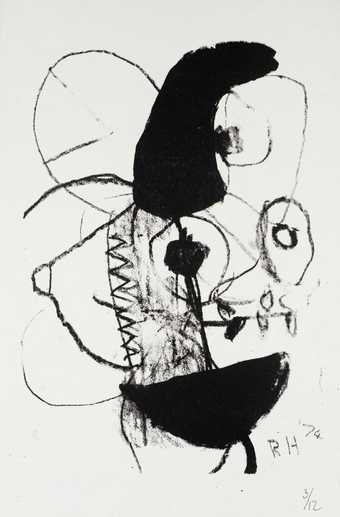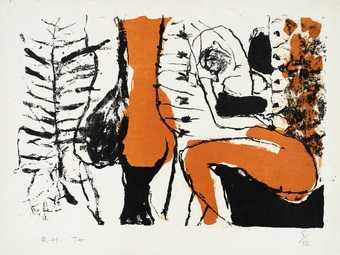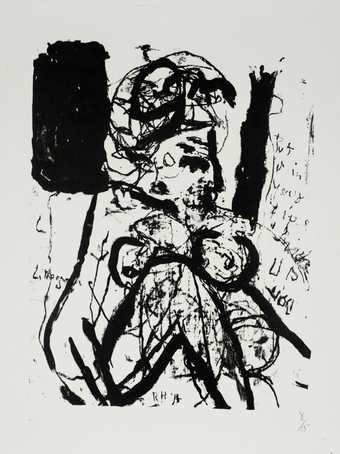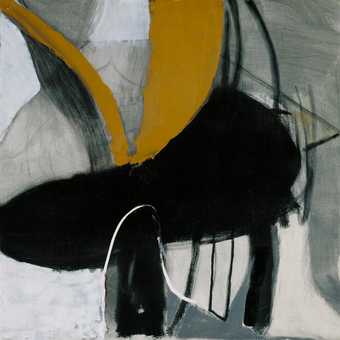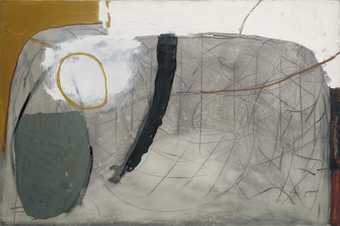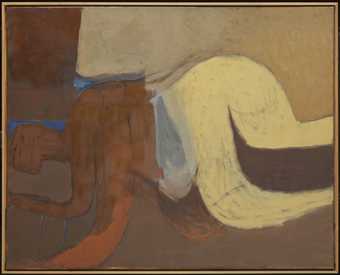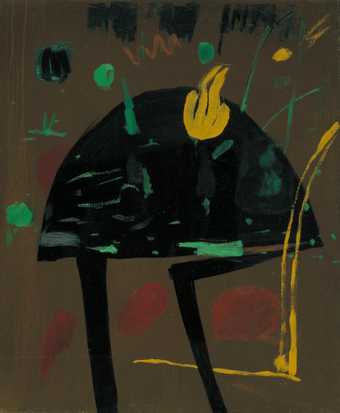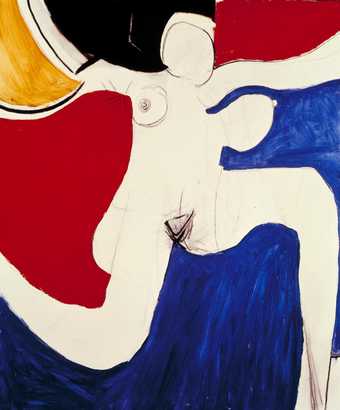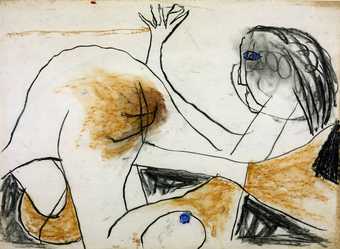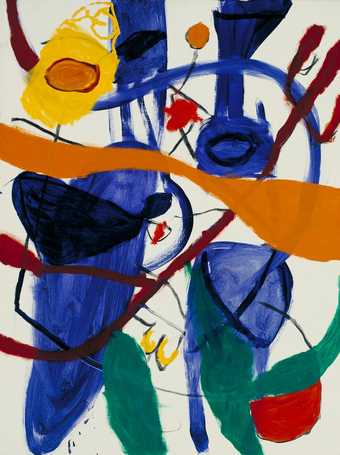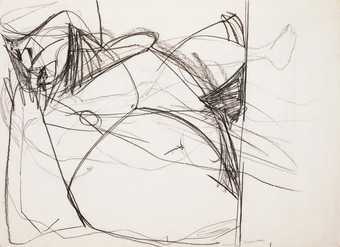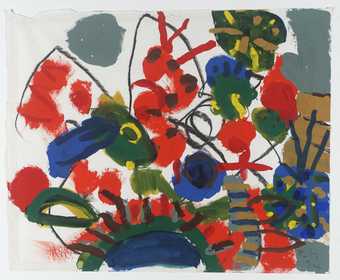
Not on display
- Artist
- Roger Hilton 1911–1975
- Medium
- Gouache and charcoal on paper
- Dimensions
- Image: 380 × 560 mm
frame: 570 × 750 × 20 mm - Collection
- Tate
- Acquisition
- Bequeathed by David Brown in memory of Mrs Liza Brown 2003
- Reference
- T11746
Summary
Two Dogs was painted in Roger Hilton’s final years, a prolific period when the artist worked exclusively in gouache and drawings. The painting is organised around the image of two animals drawn in profile and facing in opposite directions. Typically for Hilton, whose paintings often involve visual rhymes and repeats, the dogs are counterbalanced in the composition. Other consistencies with earlier works include rounded planes of solid colour that appear nudged out towards the edge of the page and the way in which the outlines of the dogs meet and overlap. Whilst the dogs are described by their ears, noses, claws and tail, the more abstract features of the painting, such as the areas of solid colour or pattern, resist straightforward interpretation. Occasions of overpainting and charcoal visible under and over the paint also serve to contradict its narrative legibility.
Dogs appear in several of the drawings, hand-written notes and letters that were published posthumously in Night Letters and Selected Drawings (1980). Hilton’s earlier works on canvas often employed the combination of pale ground, black delineation, earthy colour and vivid primaries used here. David Brown has observed that his palette became increasingly vibrant as he moved towards death (Hilton 1980, p.3). This, coupled with the jaunty angles and sense of weightlessness in the composition, produces a sense of vigor and jubilation that appears in abundance in such late works.
From 1972 Hilton was no longer able to work in the first-floor studio at his cottage in Botallack, Cornwall. Long-term alcoholism led to peripheral neuritis and in 1973 the artist lost the use of his legs and was largely confined to a bed in a ground-floor room of his house where he lived and worked for over two years until his death. From December 1972 he worked only on paper, drawing or painting with gouache, switching hands to draw with his right so that he could lean on his left. In 1974 he explained to Peter Townsend, then editor of Studio International magazine, the rationale of his change in media: ‘a) It is cheap. b) It is convenient i.e. it dries quickly and allows superimposing. c) I can do it from my bed. d) The products once made can be rapidly disposed of.’ (Quoted in Lewis 2003, p.149.)
Hilton said that the decision to paint only in gouache was inspired by a Christmas gift of poster paints to one of his children in 1972 (Hilton 1980, p.3). Consciously reflecting this association to children’s imagery, his work often featured exotic-looking animals, insects birds and flowers; sailing boats and burning suns. On the subject of Naïve art, he cautioned, ‘One has to face the eternal problem about children’s art which is often charming and you can borrow from it. The difference is, I think, that children are essentially realists, whereas a mature painter is not.’ (Hilton 1980, p.14).
Further reading
Roger Hilton, Night Letters and Selected Drawings, Newlyn 1980.
Roger Hilton: Last Paintings, exhibition catalogue, Graves Art Gallery, Sheffield 1980.
Adrian Lewis, Roger Hilton, Aldershot 2003, pp.138–63.
Michelle Cotton
February 2010
Does this text contain inaccurate information or language that you feel we should improve or change? We would like to hear from you.
Explore
- emotions, concepts and ideas(16,416)
-
- formal qualities(12,454)
-
- gestural(763)
You might like
-
Roger Hilton Untitled
1974 -
Roger Hilton Untitled
1974 -
Roger Hilton Untitled
1974 -
Roger Hilton January 1957
1957 -
Roger Hilton September 1961
1961 -
Roger Hilton March 1960
1960 -
Roger Hilton Figure, February
1962 -
Roger Hilton Untitled
?1956–7 -
Roger Hilton Oi Yoi Yoi
1963 -
Roger Hilton Two Nude Women
c.1965 -
Roger Hilton Untitled
1971 -
Roger Hilton Composition in Orange, Black and Grey
1951–2 -
Peter Lanyon Drawing for ‘Orpheus’. Verso: Figure Drawing
1960, c.1960 -
Roger Hilton Foliage with Orange Caterpillar
1974

